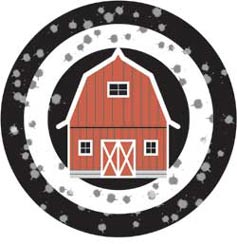

Thursday - December 7, 2006
SLAC Today is
available online at:
http://today.slac.stanford.edu
In this issue:
Attobarns: Not for Your Average Size Cow
Science Today: Tau Analysis Team to Resume Search for Lepton Flavor Violation
Photo: LSST All-Hands
Two SLAC Physicists Become APS Fellows
 |
 |
|
Thursday - December 7, 2006 |
Attobarns: Not for Your Average Size Cow
Image courtesy of Alan Chou
Today, BaBar collaborators are holding an all-day workshop on "1/ab." Not familiar with the term? It stands for inverse attobarns, which means big things for BaBar. An inverse attobarn corresponds to one billion pairs of B and anti-B particles produced by the PEP-II accelerator. More data means more physics. For BaBar, this number will be 10 years in the making, from when the experiment turned on in 1999 to when it ends in September 2008. To date, the experiment has generated almost half an inverse attobarn. "To put that in perspective, when BaBar turned on the total number of B, anti-B pairs collected by previous electron-position colliders operating at this energy was roughly 10 million. Now we are less than two years from achieving one billion pairs collected," said Jim Olsen, BaBar's physics analysis coordinator. Read more... |
||
|
|
||
 Tau Analysis Team
|
Photo: LSST All-Hands
More than 100 LSST collaborators are currently at SLAC to take part in their third All-Hands Meeting. A warm welcome to them all! Two SLAC Physicists
|
Events (see all | submit)
Access (see all)
Announcements
|
| | ||
|
|
||
 <%
Response.AddHeader "Last-modified", getArticleDate()
'Response.AddHeader "Last-modified","Mon, 01 Sep 1997 01:03:33 GMT"
'Monday, December 06, 2010
%>
<%
Response.AddHeader "Last-modified", getArticleDate()
'Response.AddHeader "Last-modified","Mon, 01 Sep 1997 01:03:33 GMT"
'Monday, December 06, 2010
%>View online at http://today.slac.stanford.edu/. |
||